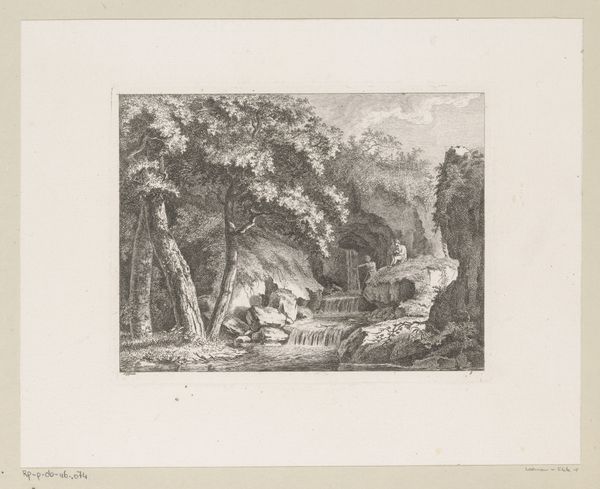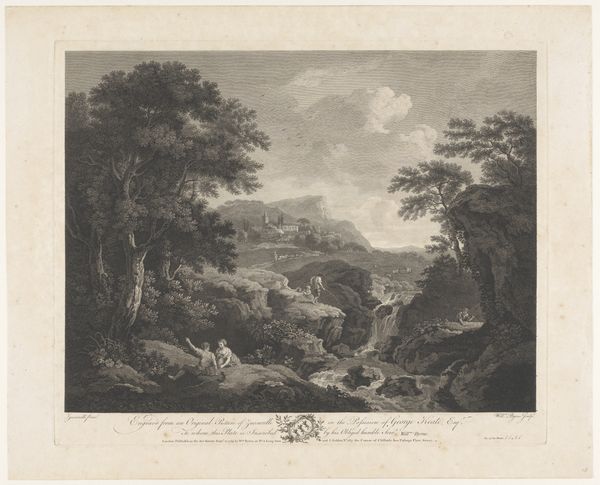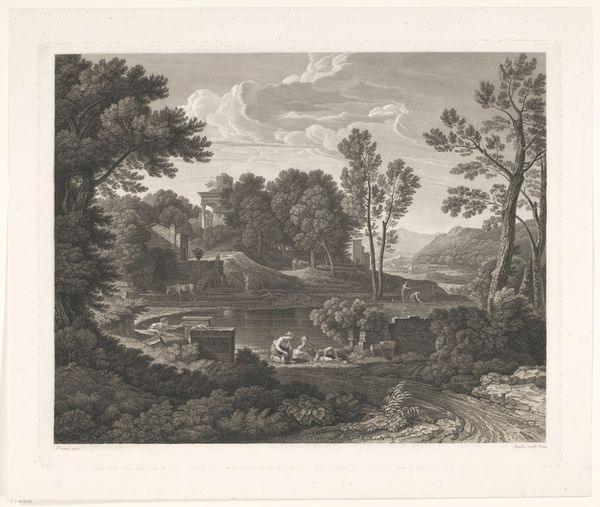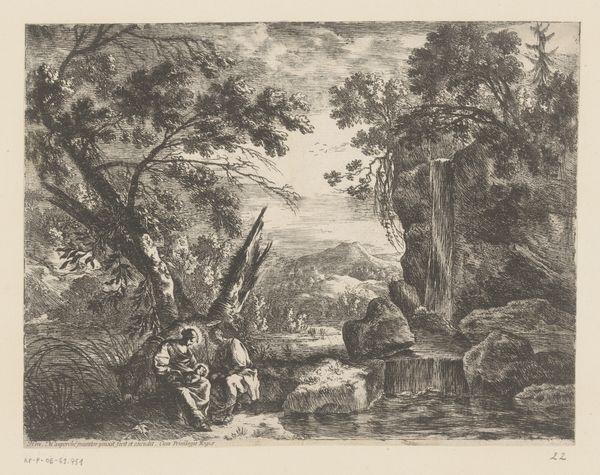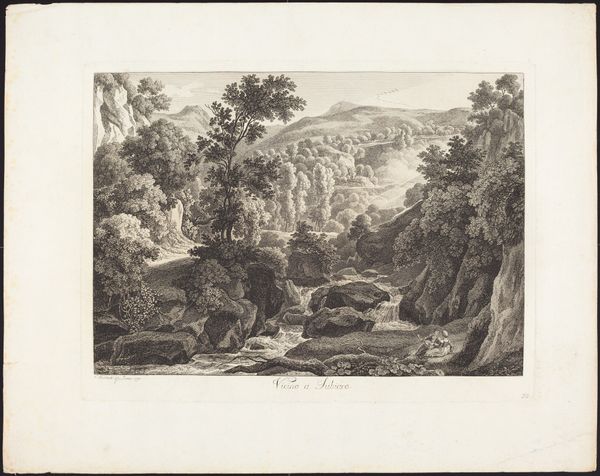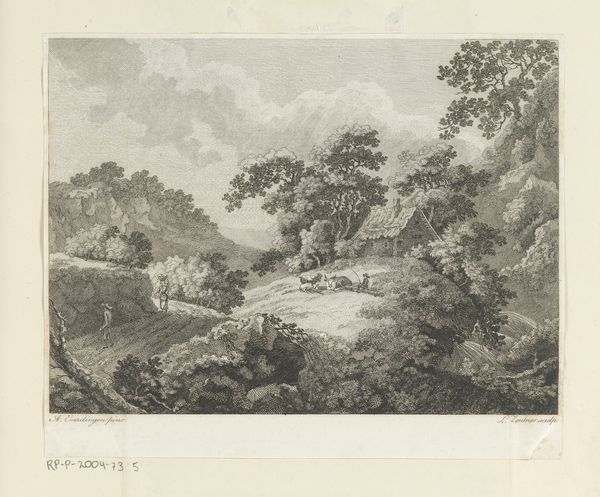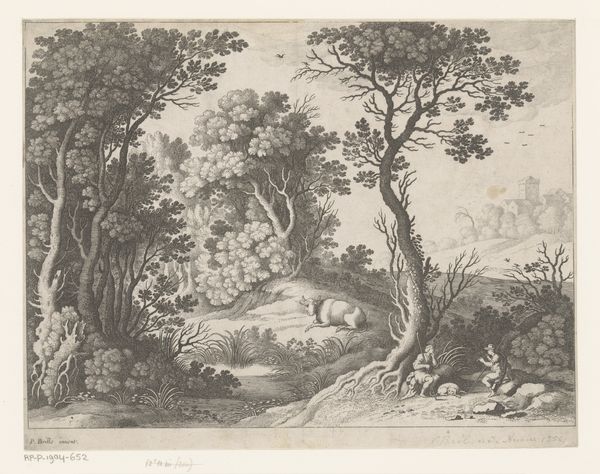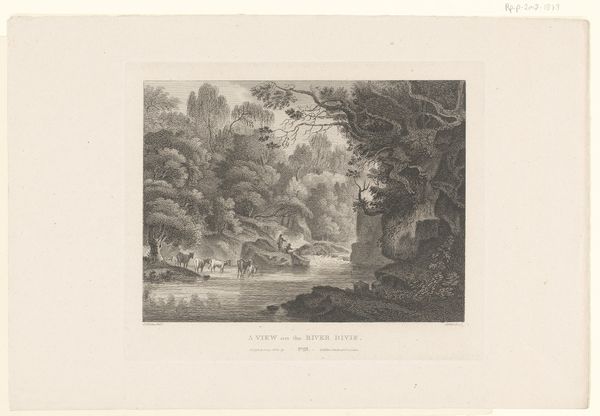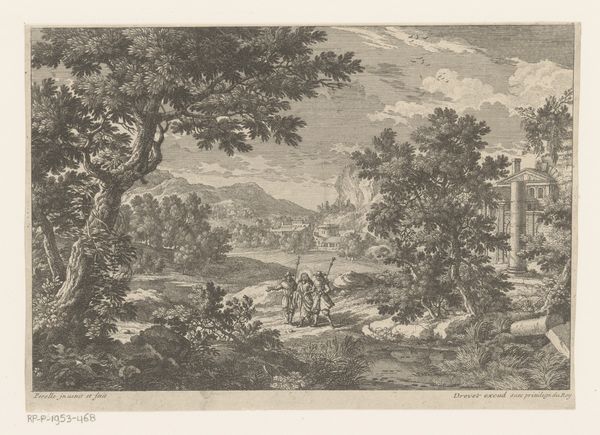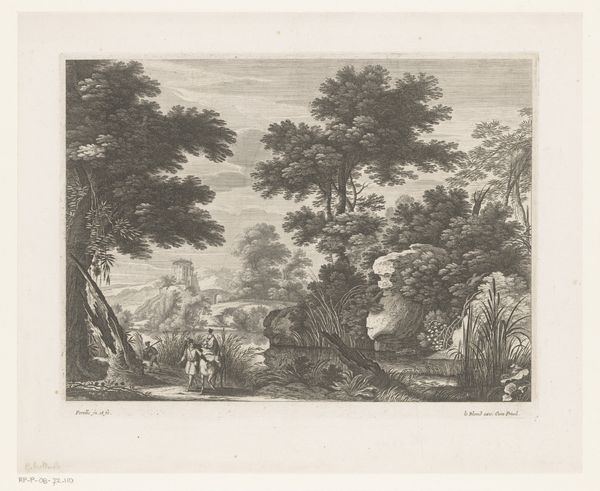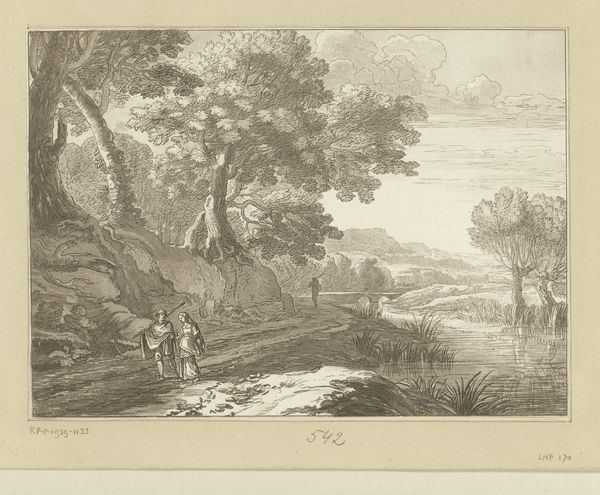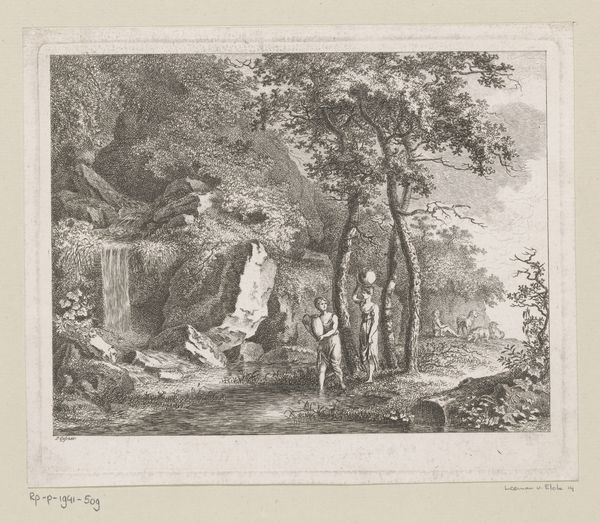
print, engraving
#
medieval
#
narrative-art
# print
#
old engraving style
#
landscape
#
classical-realism
#
history-painting
#
engraving
#
realism
Dimensions: height 230 mm, width 299 mm
Copyright: Rijks Museum: Open Domain
Editor: This is "Hercules slaying the Hydra of Lerna," an engraving made by François-Louis Français in 1842. I'm struck by the detailed textures Français was able to achieve using only lines; the foliage, the hydra’s scales – it's incredible. What stands out to you? Curator: As a materialist, I immediately consider the labour involved in producing an engraving like this in the 19th century. Each line meticulously etched, requiring immense skill and time. How does the mechanical reproduction of images, like through engraving, affect the status of this scene depicting a heroic mythological subject? Editor: So, you're saying that reproducing it makes the story less unique, more commonplace because it has lost the artist's individual touch, is that it? Curator: It’s more complex than simply devaluing it. Consider the distribution networks that this engraving entered. Was it disseminated among the elite, or was it meant for a wider audience? Understanding the consumption of such images helps us decode its social function. Editor: That makes sense. Was this image meant to elevate Hercules as a worker conquering nature, and by extension, humankind's ingenuity in transforming material and matter? Curator: Exactly! The Hydra can be seen not just as a monster but also as a symbol of the untamed, of natural forces resistant to human intervention. Hercules, with his club, represents the imposition of order and the transformation of the landscape for productive purposes. How does that influence your interpretation of the image? Editor: Thinking about it like that gives the landscape a whole new meaning. It's not just a backdrop, but a site of labor. I initially appreciated it from the beauty of form; now, I find there are new perspectives. Curator: It shows how even mythological scenes are infused with contemporary ideas about production, labor, and the relationship between humanity and nature.
Comments
No comments
Be the first to comment and join the conversation on the ultimate creative platform.
